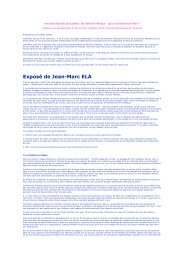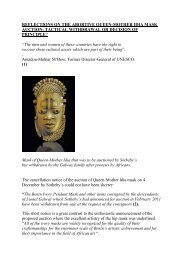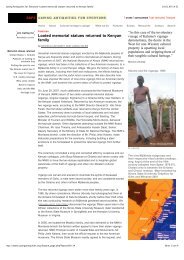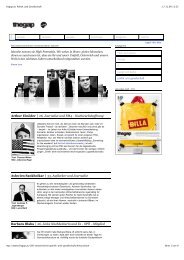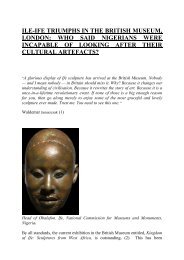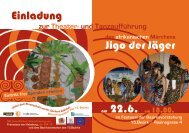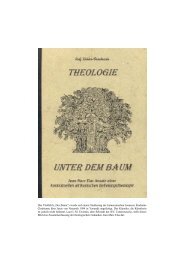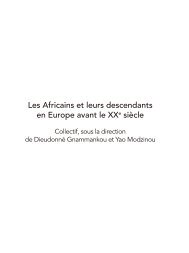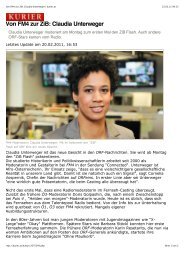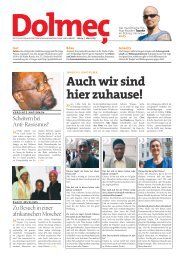as international economics or politics, or issues such as 'development' or tourism, which I considerhighly structured by racialised ideas, are missing on the agenda. Secondly, on a related issue, notenough attention is drawn to material benefits of whiteness. Due to the strong focus on identities –whose importance I do not want to neglect – issues such as the global distribution of wealth are notaddressed. Our present day situation where the poorest countries are predominantly inhabited byblack people and the richest countries predominantly by white people (Goudge 2003: 24) mightseem too obvious to mention. However, I would argue that it is indeed necessary to put discussionsabout 'whiteness and capitalism' as well as 'whiteness and neo-liberalism' on the agenda. 24 Nottalking about these relationships means to disavow that racism “is the preeminent instrument forexploitation” (Tißberger 2006: 91). Third and last, I am missing a deeper structural analysis of howwhite power is constituted. Authors of Critical <strong>White</strong>ness Studies focus mainly on the historicalroots of knowledge and power constellations. Issues of e.g. the invisibleness of whiteness or itsconstructed neutrality are addressed, but it is not explained how they are achieved and maintained.Merely a few writers use a psychoanalytical approach to the topic in order to give more elaborateexplanations.whiteness and psychoanalysisTißberger and Kilomba are the most prominent representatives of the psychoanalytical approachtowards whiteness in Germany. They mainly draw on theories and writings of Kristeva, Fanon,McClintock, Gilman and Butler. Analysing whiteness, they focus on six psychological strategieshow white people deal with their situation as the dominant group.First, the strategy of denial. <strong>White</strong> behaviours that contribute to power differences, powerdifferences as such (“myth of sameness” 25 ) and privileges which go along are denied in order to notlet them appear as aggression (Tißberger 2006: 91). Second, the abjection, which according toMcClintock (1995: 71) “marks the border of the Self”: What is not considered 'normal' but impurehas to be expunged (Kristeva, in Tißberger 2006: 89). Thus, the space of normality is constructed.Third, the projection of desires, fears or own problems onto the Other stabilizes the system and“serves the white subject's material and psychic well-being” (Tißberger 2006: 94). Four, whitepeople fantasise about the Other and as they have the power of representation make themselvesbelieve that their fantasies are “true, valid, authentic, authoritative” (Kilomba 2005: 81). Five,through denying the own white participation in the production and profit of power relations andthrough asserting 'negative' or weak aspects of the Self onto the Other whiteness is able to positionitself as a victim of the colonial system (Kilomba 2005: 80, Goudge 2003: 50). Six, however at thesame time, white people use the strategy of blaming the victim: e.g. when the Other addresses theinjustice of the system, s/he is considered as hypersensitive and too emotional (Arndt 2005b: 347,24 Merely the journal iz3w include these topics, they however do not find their way into the Critical <strong>White</strong>ness Studies.25 bell hooks (quoted in Arndt 2005b: 347)10
Kilomba 2005: 82f). Together, these strategies allow the “white subject to look at itself as morallyideal, correct, virtuous, honest, democratic, impartial” (Kilomba 2005: 80).Chapter II: Barthes' Mythologies“The literal meaning of myth is not to reflect an objectiveworld view; in fact it is expressed how the humancomprehends himself in his world.” (Rudolf Karl Bultmann1941: 22, translation TK)In the last chapter, I criticised Critical <strong>White</strong>ness Studies as concentrating solely on genealogies anddiscourse analysis and not examining structures that underlie whiteness. Some authors mention a“grammar” (Wollrad 2005: 19) or a “pattern” (Goudge 2003: 20), but do not point out how it can beanalysed and deconstructed. Roland Barthes offers a structural analysis of myth as a tool ofproduction, conservation and manifestation of power, which is used by dominant groups. One hasnot to believe in all principles of structuralism to consider (parts of) his theory helpful for theanalysis of whiteness. I therefore do not consider his theory of myth as a rigid system, but as anauxiliary tool.The essays which Barthes collected in his book “Mythologies” (1957, first English translation in1972) originate from a series of articles he published between 1954 and 1956. Discussing variousmyths of French daily life in the first part of the book, he develops a methodology how to deal withmyths in general in his last chapter “Myth today”. I came across Barthes during my MA inPostcolonial Studies at Goldsmith's College in London. Although I found him really fascinating, Iforgot about him again until I read a short quotation about myths in Arndt (2005b: 340). His theorydeals with strategies of dominant societies to establish an unquestioned hegemony. I thereforeconsider his mythology a very fruitful approach in order to understand and deconstruct the waywhiteness is exercising power. Below, I am outlining the main ideas of Barthes' theory.Barthes starts with defining that “myth is a type of speech” (Barthes 2000, 109) 26 , it “is a type ofspeech chosen by history” (110). All kinds of things could be a myth. Myths carry a message andconsist of written or pictorial forms and can be analysed with semiology. Barthes draws on thetheory of semiology of his countryman de Saussure, who developed it a few decades earlier whilehe was studying linguistic systems. However, according to Barthes it is not enough to simplytransfer the methods of formal science semiology from linguistics to mythology, but instead we26 if not stated differently, all page numbers in this chapter refer to Barthes (2000)11



